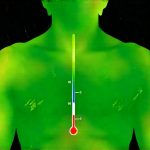Autonomic nervous system (ANS) dysregulation is increasingly recognized as a core component in many chronic conditions characterized by seemingly disparate symptoms. Often overlooked, the ANS – responsible for regulating bodily functions like heart rate, digestion, respiration, and temperature – profoundly impacts our overall well-being. When this intricate system malfunctions, it can trigger a cascade of physiological responses, leading to a wide spectrum of health challenges. One particularly debilitating manifestation linked to ANS dysregulation is cyclical nausea, often experienced as recurring episodes of intense queasiness that significantly disrupt daily life. This article will delve into the complex relationship between these two factors, exploring how imbalances in the autonomic nervous system can contribute to the development and perpetuation of cyclical nausea, and what this understanding means for potential management strategies.
Cyclical nausea isn’t merely a symptom; it’s frequently a signal that something deeper is amiss within the body’s regulatory systems. Traditional approaches often focus on suppressing symptoms with anti-nausea medication, which can provide temporary relief but rarely address the underlying cause. This is where understanding the role of the ANS becomes crucial. The connection isn’t always straightforward; cyclical nausea can be triggered by various factors, including migraine, gastrointestinal disorders, and even psychological stress. However, emerging research highlights a consistent pattern: individuals experiencing chronic or recurrent nausea often exhibit signs of autonomic dysfunction. Recognizing this link allows for a more holistic and effective approach to diagnosis and treatment, shifting the focus from symptom management to restoring autonomic balance. Understanding how factors like gut microbiota can contribute is key.
Understanding Autonomic Nervous System Dysregulation
The ANS operates largely outside of conscious control, working in the background to maintain homeostasis – the body’s internal equilibrium. It consists of two primary branches: the sympathetic nervous system (SNS), responsible for the “fight or flight” response, and the parasympathetic nervous system (PNS), which promotes “rest and digest” functions. A healthy ANS demonstrates a balance between these two branches, allowing the body to adapt effectively to various stressors. Dysregulation occurs when this balance is disrupted, leading to either overactivity of the SNS, underactivity of the PNS, or impaired communication between the two. This imbalance can manifest in numerous ways, including fluctuations in heart rate variability (HRV), digestive disturbances, altered blood pressure, and heightened sensitivity to stimuli.
Several factors contribute to ANS dysregulation. Chronic stress is a major culprit, as prolonged activation of the SNS depletes resources and impairs PNS function. Trauma, both physical and emotional, can also significantly impact autonomic regulation. Underlying medical conditions like diabetes, autoimmune diseases, and neurological disorders can further exacerbate these imbalances. Furthermore, lifestyle factors such as poor diet, lack of sleep, and insufficient exercise contribute to a compromised ANS. Identifying the specific contributing factors is essential for tailoring effective interventions. Many people are unaware of environmental chemicals impacting gut health, and therefore autonomic function.
The implications of ANS dysregulation extend far beyond nausea. It’s increasingly recognized as a central feature in conditions like Postural Orthostatic Tachycardia Syndrome (POTS), Irritable Bowel Syndrome (IBS), fibromyalgia, and chronic fatigue syndrome. The common thread linking these seemingly disparate disorders is often an underlying impairment in autonomic function. This highlights the importance of considering ANS assessment when evaluating patients with unexplained or persistent symptoms.
The Gut-Brain Axis and Cyclical Nausea
The connection between the brain and the gut – known as the gut-brain axis – plays a significant role in cyclical nausea. The vagus nerve, a major component of the PNS, serves as a direct communication pathway between these two systems. It transmits signals from the gut to the brain, influencing mood, emotions, and cognitive function, and vice versa. In states of ANS dysregulation, this bidirectional communication can become disrupted, leading to altered gastrointestinal motility, increased visceral sensitivity (heightened perception of sensations in the gut), and ultimately, nausea.
Specifically, SNS overactivity can slow down digestion, creating a breeding ground for bacterial imbalances and inflammation within the gut. This inflammation further exacerbates visceral hypersensitivity, making individuals more prone to experiencing nausea even with minimal gastrointestinal stimulation. Conversely, PNS underactivity diminishes digestive function, leading to incomplete food breakdown and potential bloating or discomfort that triggers nausea. The result is a vicious cycle where ANS dysregulation, gut dysfunction, and cyclical nausea reinforce each other.
Furthermore, the brain’s interpretation of signals from the gut can be heavily influenced by emotional state. Anxiety, stress, and depression – all frequently associated with ANS dysregulation – can amplify the perception of nausea, even in the absence of physical gastrointestinal issues. This highlights the importance of addressing both the physiological and psychological components of cyclical nausea to achieve lasting relief. Understanding leaky gut and its impact can also be beneficial.
Identifying Autonomic Dysfunction in Cyclical Nausea
Accurately identifying autonomic dysfunction is a critical step toward effective management. Traditional diagnostic tests often fail to capture the nuances of ANS impairment, so a comprehensive assessment is crucial. This typically involves a combination of medical history review, physical examination, and specialized testing.
- Heart Rate Variability (HRV) analysis: Measures the variations in time intervals between heartbeats, providing insights into autonomic balance and resilience. Low HRV often indicates impaired autonomic function.
- Tilt Table Test: Assesses how blood pressure and heart rate respond to changes in posture, helping identify conditions like POTS which are frequently associated with ANS dysregulation.
- Gastric Emptying Study: Determines the rate at which food empties from the stomach, identifying potential digestive issues contributing to nausea.
- Quantitative Sudomotor Axon Reflex Test (QSART): Evaluates sweat gland function, providing information about sympathetic nervous system activity.
However, it’s important to remember that these tests are just tools; a skilled clinician is essential for interpreting the results and integrating them with the patient’s overall clinical picture. A thorough medical history should focus on identifying potential triggers of nausea, as well as any associated symptoms suggestive of autonomic dysfunction, such as dizziness, fatigue, brain fog, or digestive disturbances. Consider how thyroid disorders may contribute to these symptoms.
Therapeutic Approaches: Restoring Autonomic Balance
The goal of treatment is to restore balance within the ANS and address underlying contributing factors. This often requires a multifaceted approach that combines lifestyle modifications, therapeutic interventions, and potentially medication.
- Vagal Nerve Stimulation (VNS): Techniques aimed at activating the vagus nerve can help promote PNS activity and improve gut-brain communication. These include practices like deep diaphragmatic breathing exercises, cold water immersion, meditation, and yoga.
- Stress Management Techniques: Reducing chronic stress is paramount. Mindfulness-based therapies, cognitive behavioral therapy (CBT), and biofeedback can all be effective tools for managing stress and promoting autonomic regulation.
- Dietary Modifications: Identifying and eliminating food sensitivities or intolerances can reduce gut inflammation and improve digestive function. A diet rich in whole foods, fiber, and probiotics supports a healthy microbiome.
- Graded Exercise Therapy: Carefully introducing exercise, starting with low-intensity activities and gradually increasing intensity as tolerated, can help improve cardiovascular health and autonomic function.
The Role of Personalized Medicine & Future Directions
The field of ANS dysfunction is rapidly evolving, and personalized medicine approaches are gaining traction. Recognizing that each individual’s experience of cyclical nausea is unique requires tailoring treatment plans to address specific underlying causes and contributing factors. This may involve genetic testing to identify predispositions to autonomic dysfunction or gut dysbiosis, as well as advanced imaging techniques to assess brain activity and gut motility.
Future research is needed to further elucidate the complex interplay between the ANS, the gut microbiome, and cyclical nausea. Developing more targeted therapies that specifically address autonomic imbalances holds promise for improving outcomes and providing lasting relief for individuals struggling with this debilitating condition. Recognizing the link between gut health and screen time overload can also be incredibly valuable. Also important is exploring gut bacteria and sensory processing sensitivity. Ultimately, a shift towards a holistic, patient-centered approach – one that recognizes the interconnectedness of mind, body, and nervous system – is essential for effectively managing cyclical nausea and restoring overall well-being.


















